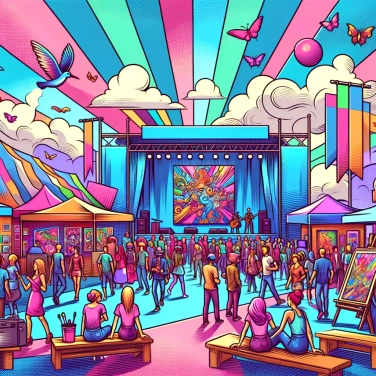Some movies are shown in their original version with subtitles rather than dubbed in order to preserve the artistic integrity of the works, keeping the voices and tones of the original actors. This also allows for a better appreciation of the actors' performances and the preservation of the linguistic subtleties of the original work.

The original language allows for the preservation of the vocal and emotional nuances intended by the director. The actor imparts a precise intention to their voice, with pauses, breaths, or tonal variations that are often impossible to perfectly reproduce in dubbing. The actor's true voice is an integral part of their role and the atmosphere of the film, and changing it would detract from the sought-after artistic authenticity. Film enthusiasts often seek this fidelity to what the director wanted to convey exactly. Lastly, dubbing sometimes takes liberties with the script and alters the original dialogues: laughter, irony, or wordplay can be changed or lost, which is unfortunate for those who appreciate the complete cinematic experience.
Dubbing a film often costs very much. You have to pay specialized actors, rent a recording studio, manage the technical aspects and the teams working behind the scenes. This quickly multiplies the expenses. And when the film targets only a few thousand potential viewers, investing in dubbing can seem risky, even outright unprofitable. The original version with subtitles is therefore much cheaper to produce, which is why many distributors choose it for independent or low-budget films.
Watching films in original version with subtitles (OVS) offers a direct immersion into the culture of origin. Listening to actors speak in their native language allows one to grasp the nuances of tone, humor, or even wordplay unique to each culture. Moreover, subtitles naturally encourage viewers to familiarize themselves with a foreign language. By getting used to hearing various languages, one develops a sharper ear and a richer vocabulary without even realizing it. Many viewers therefore choose OVS for this authentic cultural dimension and to discreetly review their English, Spanish, Japanese, or other languages while enjoying their favorite film.
Many viewers prefer the original version with subtitles to keep the authenticity of the actors' original voices. Often, film fans find that the OV better conveys the nuances of the performance and the initial intentions of the director. In contrast, some prefer dubbed versions because they find the subtitles cumbersome to read and believe they enjoy the film more without worrying about the text at the bottom of the screen. Hardcore cinephiles generally demand a cinematic experience in OV, as it enhances their immersion and gives them the impression of having a work faithful to the original. On the other hand, a broader, more family-oriented or casual audience tends to prefer dubbed films, which are more accessible and comfortable, especially for children or in contexts where the attention required for reading subtitles can be problematic.
Watching films in their original version with subtitles would naturally enhance foreign language learning and could enrich vocabulary up to three times faster than with full dubbing.
Some directors require contractually that their films be shown in the original language to ensure artistic fidelity and avoid any major alterations to the original work.
Subtitling can represent up to a 30% reduction in the reading time of dialogues compared to the original spoken text: it's no wonder that some details or nuances are difficult to convey perfectly!
In some countries like Norway, Sweden, or the Netherlands, almost all films are shown in their original version with subtitles in cinemas, which greatly contributes to the high level of English proficiency observed among their inhabitants.
Indeed. Sometimes the dubbed version leads to changes in dialogues or cultural nuances in order to better suit the target audience, often at the expense of fidelity to the original meaning of the work.
No. The decision to dub a film mainly depends on financial costs, audience expectations, and the commercial potential of the film. Therefore, many foreign films are only available in their original version with subtitles for economic and cultural reasons.
Yes, watching movies in the original version with subtitles is an excellent way to improve listening skills, pronunciation, and to enrich vocabulary in context. It is also an enjoyable and fun way to learn a new language.
The choice mainly depends on the profile of the audience, specific cultural expectations, and the availability of projection formats provided by distributors. Specialized or art-house cinemas usually prefer the original version with subtitles, while multiplexes often opt for dubbed versions to attract a wider audience.
Watching a film in its original version allows you to appreciate the authentic performances of the actors, the original intonation, specific cultural expressions, and to better understand the nuances and subtleties of the dialogue.
Some people find dubbing more comfortable because they don't have to read subtitles while following the action on screen. Additionally, the dubbed version helps eliminate language barriers that can hinder immediate understanding of the film.

No one has answered this quiz yet, be the first!' :-)
Question 1/5